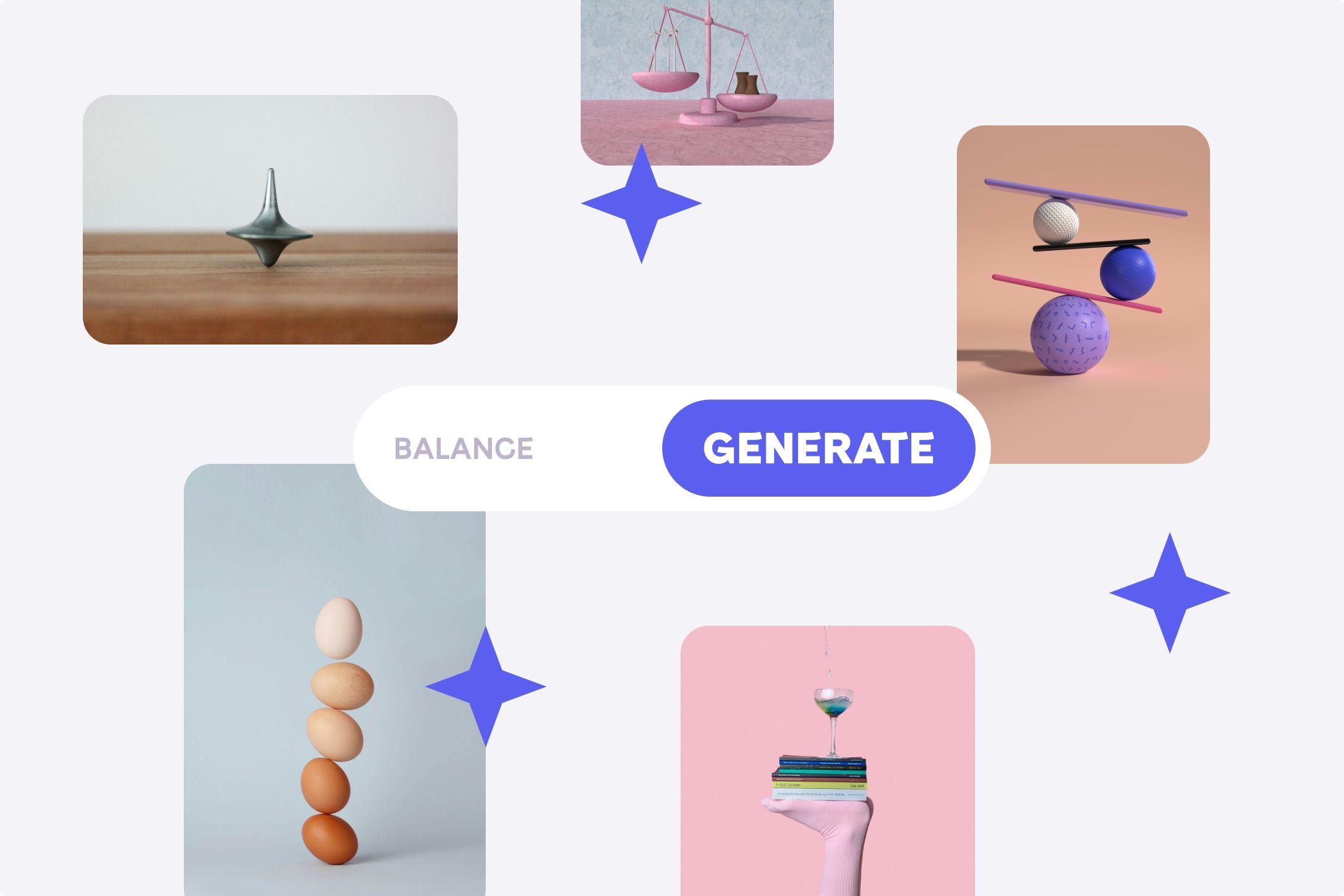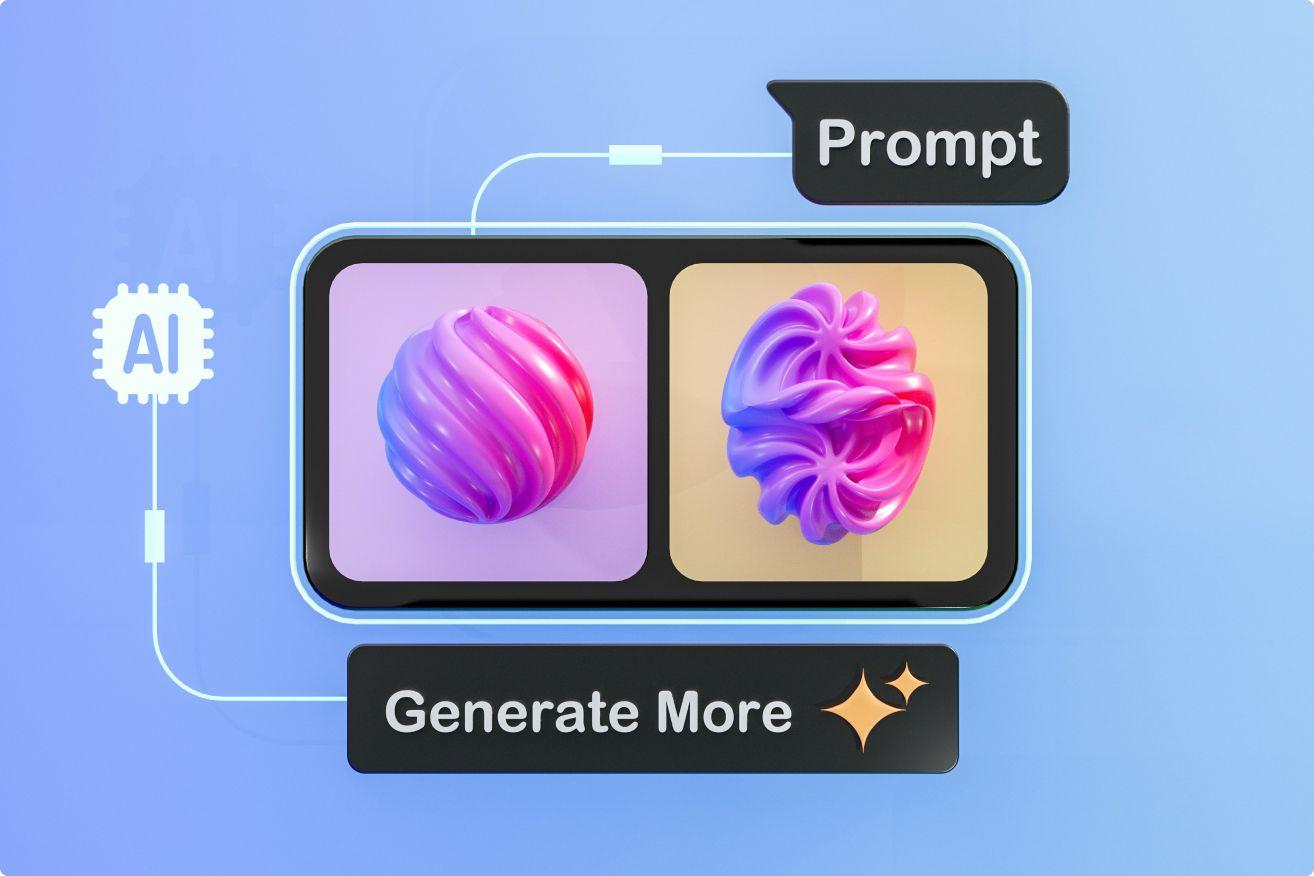Designing for AI integration: balancing creativity and automation

Written by
Fluffys Team
Published on January 6th, 2025
The rise of artificial intelligence (AI) in the design industry has ushered in a new era of possibilities and challenges. While AI-powered tools are revolutionizing workflows and efficiency, they also prompt concerns about the role of human creativity in an increasingly automated landscape. Design studios are navigating this transformation by integrating AI in ways that enhance rather than replace human ingenuity. By understanding where human designers excel and how AI can complement their skills, studios are crafting a harmonious balance between creativity and automation.
The role of AI in design workflows
AI tools have rapidly become integral to modern design processes. From generating initial concepts to optimizing layouts and colors, these technologies streamline repetitive tasks, freeing designers to focus on higher-level creative decisions. Platforms like Canva’s Magic Design and Adobe’s Generative Fill empower users to create visually appealing content quickly, even without advanced design skills. Similarly, AI-powered tools like Runway and Figma’s AI Assistant assist in automating tedious processes such as resizing assets or generating wireframes, significantly improving efficiency.
Beyond speed, AI is enabling personalized design solutions by analyzing user data. For example, platforms like UXPin Merge integrate AI to ensure real-time collaboration and component consistency, enhancing user experience designs tailored to specific audience behaviors. However, while these tools enhance efficiency, they also pose questions about the diminishing space for uniquely human creativity.
, right: [Adobe Generative Fill](https://www.adobe.com/products/photoshop/generative-fill.html)](/_next/image?url=https%3A%2F%2Ffluffysblob.blob.core.windows.net%2Ffluffys-blob-stg%2Fuploads%2Fai_workflow_in_design_fluffys_e58358a7f4.jpg&w=3840&q=75)
Left: Canva Magic Studio, right: Adobe Generative Fill
Where human designers excel
Despite AI’s capabilities, there are areas where human designers maintain a distinct edge. Creativity thrives on intuition, emotion, and cultural context—qualities that AI cannot replicate. Designers bring a nuanced understanding of human experiences, enabling them to craft designs that resonate deeply and authentically with audiences.
For instance, while AI can analyze patterns and predict trends, it struggles with abstract thinking or creating entirely new visual languages. Human designers excel at conceptualizing innovative ideas, crafting compelling narratives, and addressing cultural sensitivities. An AI-generated logo might be functional, but it often lacks the storytelling depth and strategic alignment that a human designer brings to branding projects.
Moreover, the ability to critique, iterate, and refine with purpose remains a uniquely human strength. Designers can adapt to unforeseen challenges, incorporate subjective feedback, and infuse personal touches that set a project apart.

Image by Philip Oroni, Unsplash
Complementing creativity with AI
The true potential of AI in design lies in its ability to augment human creativity. Studios that embrace this partnership are unlocking new possibilities while maintaining their artistic integrity. For example, AI can serve as an idea generator, providing a foundation for designers to build upon. Tools like MidJourney and DALL-E generate visual concepts that spark inspiration, while leaving the refinement and strategic direction to the designer.
In collaborative workflows, AI’s ability to process and visualize data quickly can inform design decisions with greater accuracy. For instance, in UI/UX design, AI-driven heatmaps and user analytics tools help designers identify pain points and optimize interfaces effectively. These insights allow designers to focus on crafting user-centric solutions rather than spending excessive time analyzing raw data.
Challenges of AI integration
While AI offers significant advantages, its integration into design workflows is not without challenges. Ethical concerns, such as the potential for biased algorithms and copyright infringements, must be carefully addressed. Additionally, over-reliance on AI risks homogenizing creativity, as AI-generated designs often draw from existing patterns rather than forging new ground.
To mitigate these risks, studios must establish clear guidelines for AI usage. Incorporating ethical frameworks and maintaining a critical approach to AI outputs ensure that the technology remains a tool rather than a crutch. Training teams to use AI effectively while valuing human oversight is crucial for maintaining a creative edge.
Looking ahead: the future of AI in design
As AI continues to evolve, its role in design will become more sophisticated. Emerging technologies like generative adversarial networks (GANs) and AI-driven adaptive interfaces promise to expand creative possibilities even further. For studios, the key lies in embracing AI as a collaborator rather than a competitor. By leveraging AI to handle repetitive tasks and data-driven insights, designers can channel their energy into innovation and artistry.
Ultimately, the integration of AI in design is not about replacing human creativity but enhancing it. Studios that strike this balance will not only remain relevant in an AI-powered world but also set new benchmarks for what’s possible in creative expression.
- designcreative processdesign toolsdesign workflowdesign tipsdesign inspiration
](/_next/image?url=https%3A%2F%2Ffluffysblob.blob.core.windows.net%2Ffluffys-blob-stg%2Fuploads%2Fai_image_generation_fluffys_ab2520ad0d.jpg&w=3840&q=75)